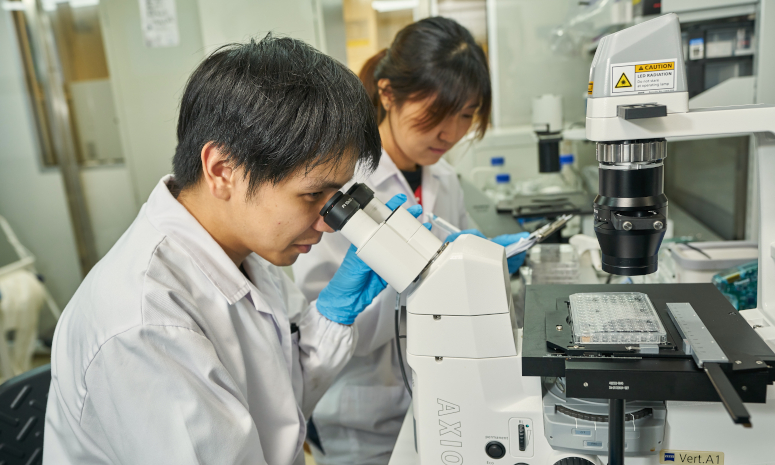Scholarships

NTU Research Scholarship
The NTU Research Scholarship is awarded to outstanding graduate students for research leading to a higher degree at the University. The Scholarship consists of a monthly stipend plus a tuition fee subsidy.
View RSS Eligibility and CriteriaEconomic Development Board Industrial Postgraduate Programme
The Industrial Postgraduate Programme (IPP) is an initiative by the Singapore Economic Development Board (EDB) to build a pool of postgraduate manpower in Singapore with critical R&D skillsets through training in a corporate R&D environment and local universities. At the end of the training, graduates will take on R&D roles in the industry.
View EDB-IPP Eligibility and CriteriaOther Scholarships
Besides scholarships offered by the Singapore Centre for 3D Printing, applicants are welcome to explore other opportunities provided by the School or external organisations.
View Other ScholarshipsAvailable PhD Projects
Project 1: 3D Construction Printing for Sustainable and Energy-Efficient Buildings
This topic focuses on advancing the integration of 3D construction printing technologies with building energy efficiency strategies. By leveraging the capabilities of 3D printing and AI-driven design optimization, students will investigate how to create optimized building envelopes that enhance thermal insulation and passive design to significantly reduce energy demands in modern structures. This may include exploring advanced materials, AI-enhanced printing systems, and dynamic printing parametersor design that could regulate indoor temperatures and improve thermal performance, offering superior energy efficiency compared to conventional construction methods. By utilizing AI-powered simulations and developing real-world prototypes, the aim is to push the boundaries of energy-efficient, sustainable building technologies. We invite motivated researchers to join this pioneering effort in transforming the construction industry through cutting-edge innovation.
Project 2: 3D Bioprinting of Pancreatic Islet Model for Diabetes Treatment
Diabetes is a significant global healthcare challenge, with approximately one in three Singaporeans facing a lifetime risk of developing the disease. For Asians with diabetes, there is a more prominent lack of pancreatic islet/beta cell mass and function, predisposing them to develop type 2 diabetes (T2D) more readily. Consequently, strategies aimed at repairing/replacing pancreatic islet and β-cells are critically important.
This funded PhD project aims to develop an advanced 3D bioprinting approach to fabricate an in vitro human pluripotent stem cell (hPSC)-derived β-cell model integrated with a perfusable vascular network. This innovative model holds significant potential for future clinical applications in diabetes treatment. The PhD candidate will investigate the fabrication of large-scale vascularized and functional 3D islet models, which will include tasks such as bioink preparation, cell-matrix interaction studies, and exploration of novel bioprinting modalities.
The candidate will collaborate closely with renowned experts in the fields of materials science, 3D bioprinting, stem cells, pancreatic β-cells, and diabetes biology. Experimental studies will be conducted at SC3DP's biomanufacturing laboratory, which hosts state-of-the-art 3D bioprinting technologies, in-vitro cell culture, and bioink development facilities. Motivated researchers are invited to join this pioneering effort in providing better healthcare through advanced engineering solutions. Applicants with backgrounds in Mechanical Engineering, Materials Science, Biomedical Engineering, or related fields are highly encouraged to apply.
Scholarship Project Application
Interested applicants are to submit the form below and upload your CV together with proof of fulfilling NTU admission requirements
